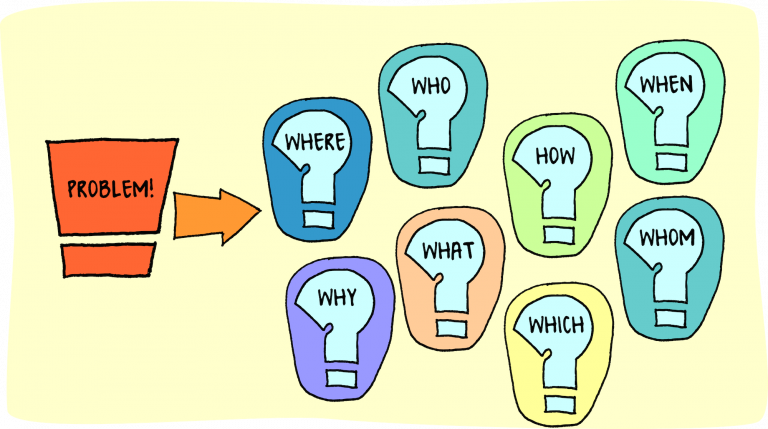
Businesses exist essentially to solve problems. The internal and the external conditions of a business depend on the sophistication of the problem-solving methods adopted in the management of the business. Hence, it is often thought that problem-solving is an integral part of business management.
Problem solving is defined as involving ‘’logical and systematic approach to defining the problem, generating solutions, and then choosing and implementing the best option’’. Problem solving skills and processes are designed to prevent or overcome difficulties needed to improve during stable periods.
An effective problem-solving is one that informs a realistic and sustainable solution. However, there are key things to put into consideration before moving to solve a problem. Without this, a problem solving effort may go wrong or even complicate the existing problems.
Register for Tekedia Mini-MBA edition 18 (Sep 15 – Dec 6, 2025) today for early bird discounts. Do annual for access to Blucera.com.
Tekedia AI in Business Masterclass opens registrations.
Join Tekedia Capital Syndicate and co-invest in great global startups.
Register for Tekedia AI Lab: From Technical Design to Deployment.
You need to ask and ascertain if there is a problem at all in order to avoid investing your resources and time on a needless course. This could be done by doing the following:
- Putting your observation to further analysis to identify a probable cause of the problem
- Tracing the problem down to specific context, such as asking what, who, when, where and how.
- Creating an environment where problems are openly acknowledged and discussed
- Creating an environment that preempt difficulties before they develop into crisis
- Understanding the resources available at your disposal and how best they can be deployed in the course of problem solving.
Some Problem-solving techniques
There are various problem-solving techniques that you can adopt depending on the context and the nature of the problems to be solved. They are discussed as follows:
Cause and effect Analysis
For every effect there is a cause. Therefore, cause and effect analysis is the process of analyzing the effects of the problem to identify the actual cause of the problem and how to deal with it. This is also referred to as a diagnostic analysis. For example, Doctors observe the symptoms of the illness to decide what the cause is and so that they could know what treatment to prescribe. Examples of cause and effect analysis are the five whys by Toyoda and the Pareto principle analysis.
Pareto 20-80 percent Principle
This method is based on the assumption that 80 percent of problems are caused by 20 percent of possible factors. Therefore, assessing the trouble-making 20 percent is necessary. This can be useful in organizing the data so that the most significant factors influencing the problems are clearly illustrated. The Pareto 80/20 rule in Problem-solving encompasses four steps which are as follows:
- Identifying the main problem
- Determining the factors causing it and how they do this
- Listing the biggest factors contributing to the problem
- Developing a solution targeting each factor individually
The five whys
This was developed by Sakichi Toyoda in the 1930s and it became popular in the 1970s. It is a method of unearthing the layers of causes until the root cause or centre of gravity of a problem is reached. The five whys method is based on the assumption that by interrogating the apparent answers at each successive level or phase of the analysis, one will have identified the root cause of a problem by the fifth level or phase.
System Thinking
System thinking is the process of inquiry into a problem and solving it from the perspective of the whole or the general system. This method is based on the assumption that nothing exists in isolation, therefore it must be considered in terms of its connection to other things. For example, administrative error in staffing and training could impact sales performance resulting in low liquidity and high turnover induced by poor and inconsistent emolument.
Design thinking
Design thinking is the process of inquiry into problems and solving them from the perspective of the end users. This method is based on the assumption that the product sells because there is a use case for it. Therefore, analysis and solution development must begin from the point where the solution is needed and will be used. Design thinking is an iterative process which includes five stages namely; empathy, defining the problem, ideating, developing the prototype, and testing.
Domain-led Analysis
It is a process of interrogating a complex problem from a field of discipline. For example, the Covid-19 pandemic which is fundamentally a health and pharmaceutical problem had several implications that cut across other aspects of the society including the economy, politics, culture and social relations etc. The complex nature of the problem necessitated its analysis and recommendations to it from different professional fields.
What to avoid when problem solving
Paralysis by analysis. Analyzing and discussing an issue for too long when the time could be cultivated on something else. This is often the case when people become obsessed with the situation, seeking the perfect answers and focussing too much on defensive measures
Hubris. Open-mindedness is an essential way of reaching an effective solution. However, when a problem-solving opportunity is restricted to some set of individuals perhaps because of their positioning in the management structure, the possibility of reaching an effective, comprehensive solution becomes narrow.
Knowing-doing gap. You know exactly what to do but are not doing it, perhaps because you are looking for the right timing or the right resources to execute the plan as conceived.
Resources:
Good Small Business Guide 2012: How Start and Grow Your Own Business




Great insight Ismail, problem solving can seem easy but not everyone has the capacity to really analyze a problem and solve it using some of the scientific approaches you mentioned above.
Thanks. The good thing is that it can be learned. There are courses on problem solving.